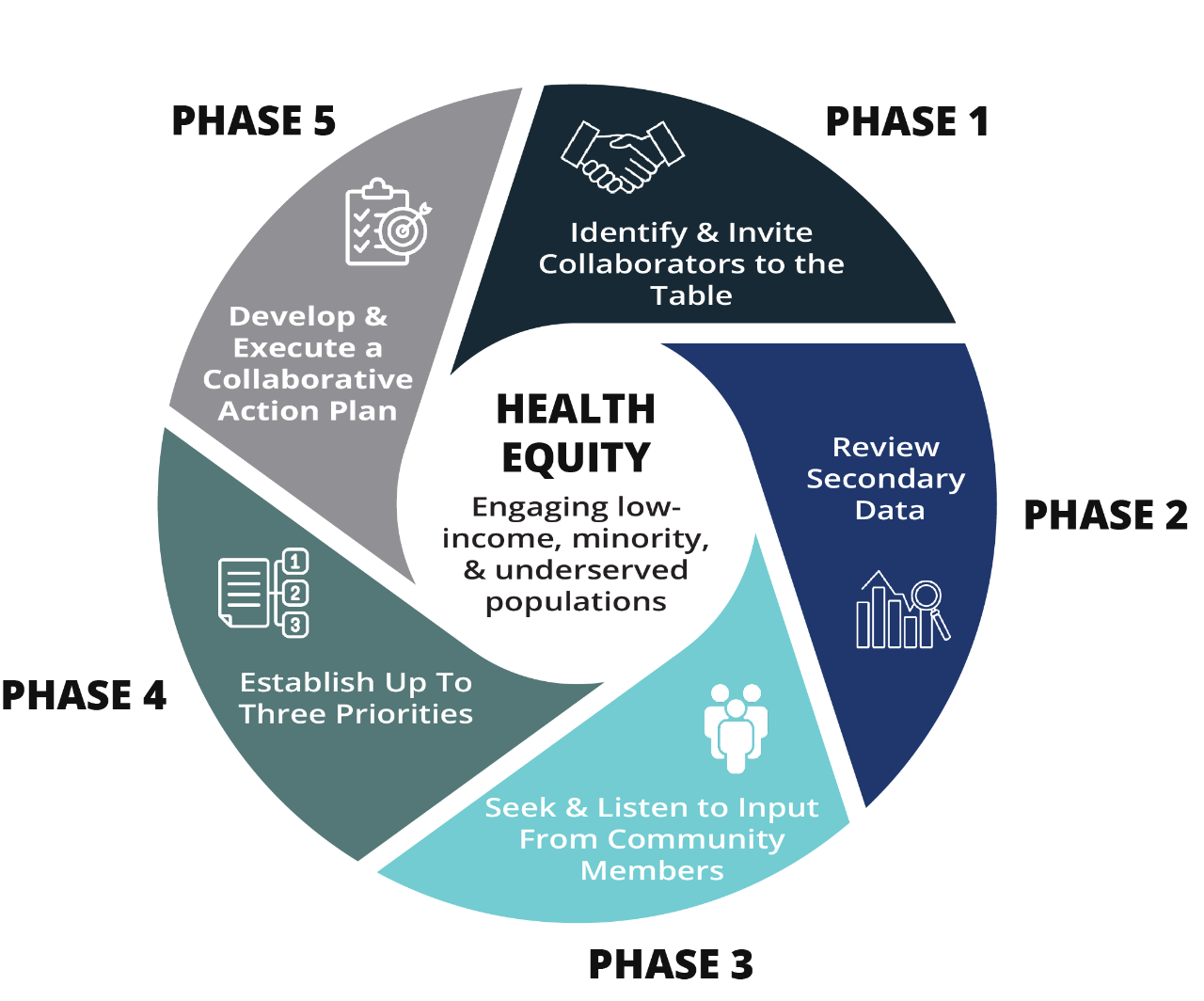CHA/CHIP Resources
County Health Assessment
The County Health Improvement process, including both the County Health Assessment (CHA) and the Community Health Improvement Plan (CHIP), aims to increase the impact of Health Councils by providing a framework for councils to conduct a locally-led needs assessment and action planning process. The CHA guides Health Council members through data collection to determine up to three priorities for the council to address through cross-sector collaboration and community-driven action plans. County Health Councils lead this five-phase process, with administrative and facilitative support from their respective county health departments. In addition, regional health departments and the Office of Strategic Initiatives provide support through technical assistance, resource sharing and shared-learning opportunities.
CHA Goals

- Increase overall stakeholder engagement and participation in Health Council meetings/activities
- Support local leadership by providing County Health Councils with structure, support, and resources aimed at identifying and addressing common priorities
- Facilitate the development of 3-year action plans for each Health Council participating in the CHA process
- Provide a platform to integrate and align local and state-level strategic planning
Use the worksheets, guides, data packages, and other resources provided on this site to guide your Health Council step-by-step through the County Health Improvement Process. The TN Vitality Toolkit is also available as a resource to provide information on potential priority areas, offer ideas for action, spotlight community examples, and more.
CHA Priorities & the TN Vitality Toolkit
Mental Health
Supporting the mental health of community members involves caring for those experiencing acute crises and sustaining protective factors like healthy relationships and effective coping skills from a young age.
From economic stability to community safety to attainable housing, there are many upstream factors that have profound effects on mental health. Access to care is critical for prevention and mitigation.
Substance Misuse
Substance misuse, including tobacco, stimulants, opioids, alcohol, and more, poses serious risks for health problems and even death.
Individuals are more at risk for developing a substance use disorder and for facing difficulties accessing treatment if they have experienced Adverse Childhood Experiences, have been involved with the criminal justice system, or experience lack of housing.
Obesity
Obesity is a complex disease that may be driven by genetics, medical conditions, environmental factors, as well as diet and physical activity. These in turn are impacted by one's social and physical environment, which could limit one's ability/time/resources to have a balanced diet or exercise.
Obesity is associated with higher risks for type 2 diabetes, high blood pressure, and even cancer. To mitigate these negative health issues, communities can emphasize opportunities for accessible nutrition and attainable routine physical activity. Decreasing weight-based stigma and supporting access to mental and physical health care are also essential.